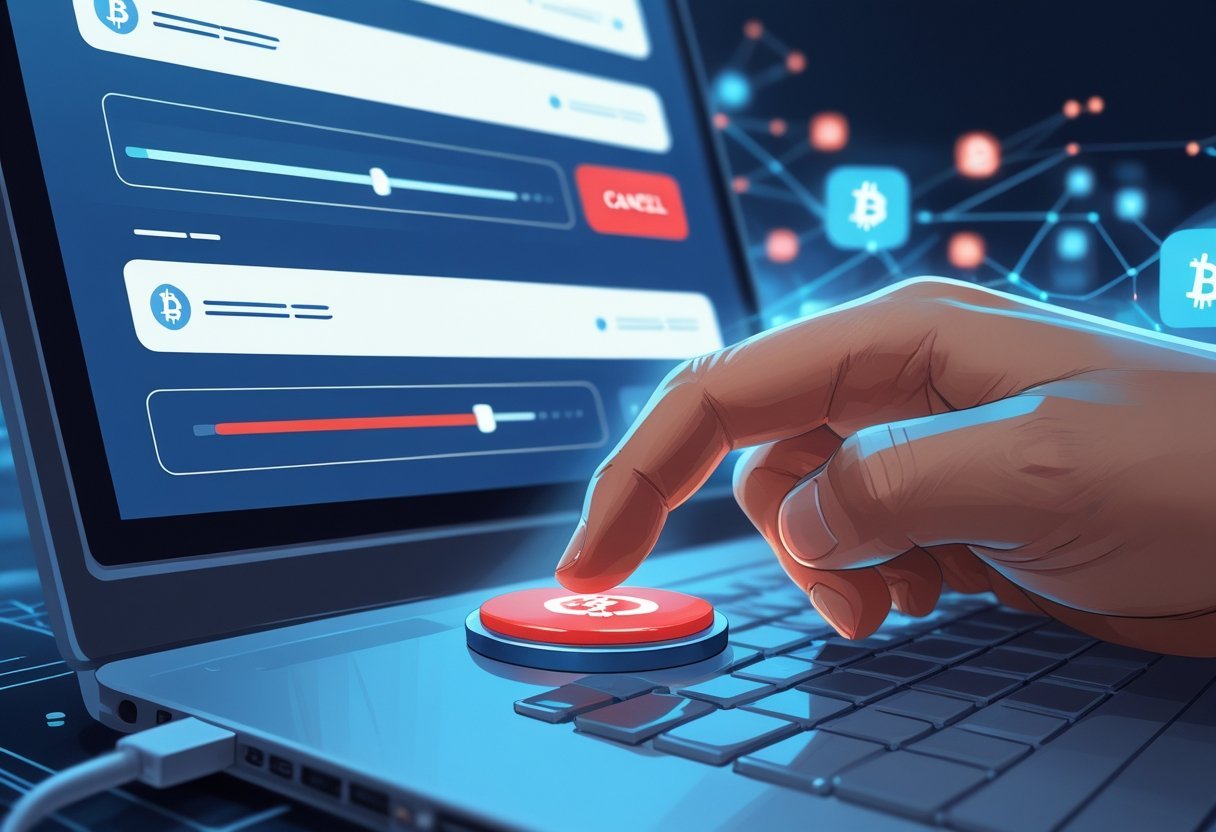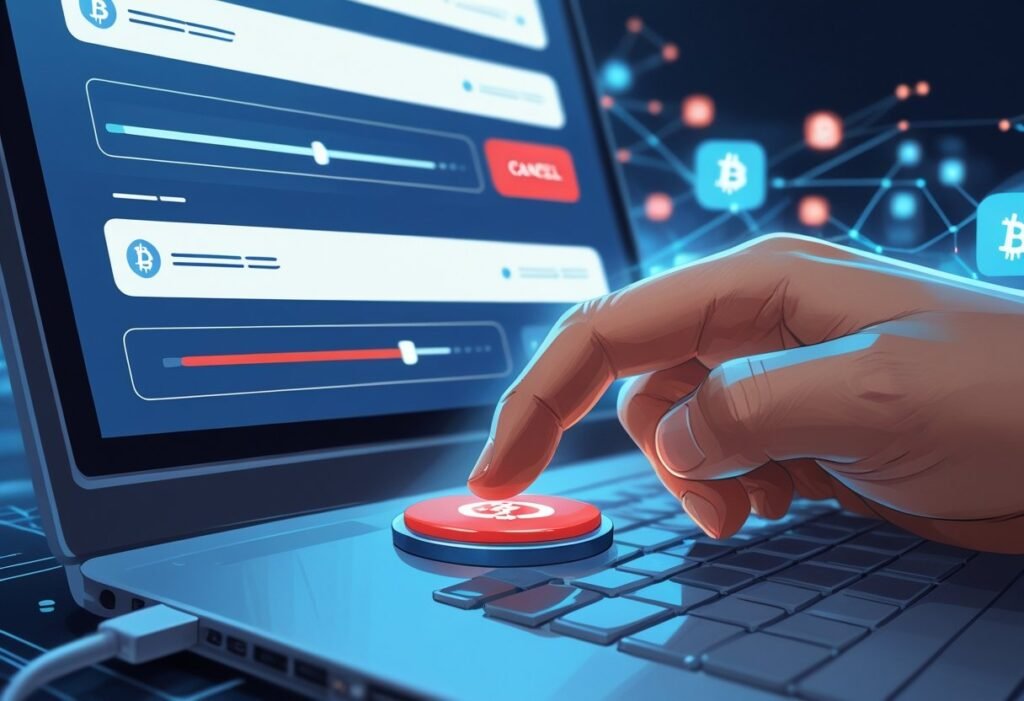Canceling a Bitcoin transaction is possible only when the transaction is still unconfirmed on the network. If the Bitcoin transaction has not yet been confirmed by miners, it can be canceled by replacing or ignoring it, but once confirmed, it cannot be reversed. This limits options for canceling a transaction once it starts to be processed on the blockchain.

The most common way to cancel an unconfirmed Bitcoin transaction is to create a new transaction that uses the same funds with a higher fee or to wait until the unconfirmed transaction drops from the network’s memory pool. This process requires some technical steps and knowledge of how Bitcoin transactions work to avoid losing funds.
Understanding these details can save users from mistakes or delays when sending Bitcoin. Learning when and how a Bitcoin transaction can be canceled helps users stay in control of their digital payments. For more details, see how to cancel an unconfirmed Bitcoin transaction.
Understanding Bitcoin Transactions and Why They’re Hard to Cancel
Bitcoin transactions move funds between wallet addresses using a decentralized network. They are recorded on the blockchain, where each transaction gains confirmations over time. Once confirmed, transactions become permanent and visible to anyone, making changes difficult.
This section explains how bitcoin transactions work, why confirmations matter, and what causes the difficulty in canceling a transaction after it is sent.
How Bitcoin Transactions Work
A bitcoin transaction starts when a user sends bitcoin from their wallet to a recipient’s address. The transaction contains details like the amount, sender, recipient, and transaction ID. Once broadcasted to the decentralized network, nodes validate it.
The transaction enters a waiting area called the mempool, where it waits for miners to include it in a block. Transactions with higher fees get faster attention. Once a miner confirms the transaction, it becomes part of the blockchain’s permanent record.
Users can track their transaction status, including whether it is confirmed or still unconfirmed, through a blockchain explorer. This visibility helps users verify if funds moved correctly between addresses.
Confirmation, Immutability, and Blockchain Transparency
When miners add a transaction to a block, it receives one confirmation. Each new block after that adds additional confirmations. The more confirmations a transaction has, the harder it is to change or reverse.
Bitcoin’s blockchain is designed to be immutable. This means once a transaction is confirmed, it cannot be altered or deleted. This immutability supports trust and security in the network.
The transparency of the blockchain lets anyone view all transaction history and details. This openness prevents fraud but also means mistakes in sending bitcoin cannot be hidden or undone once confirmed.
What Makes Cancelling a Bitcoin Transaction Challenging
Bitcoin has no central authority to reverse or cancel transactions. Once broadcast to the network, the transaction is out of the sender’s control. If it remains unconfirmed, it may be replaced or “double spent,” but only under specific conditions.
Transactions can get stuck if the miner fee is too low, causing delays in confirmation. In rare cases, users can send a new transaction with a higher fee to replace the unconfirmed one, but this only works before the first transaction confirms.
After confirmation, the transaction’s immutability stops any cancellation or reversal attempts. This design is intentional to avoid double spending and maintain the decentralized network’s integrity. Users should always double-check transaction details like recipient address before sending.
More detail on canceling unconfirmed bitcoin transactions can be found at How to cancel an unconfirmed Bitcoin transaction – CoinCentral.
Methods to Attempt Cancelling an Unconfirmed Bitcoin Transaction
When a Bitcoin transaction remains unconfirmed, certain steps can be taken to try to cancel or replace it. These methods mainly involve adjusting transaction fees or using special wallet features. Some approaches require technical tools or quick action to avoid long waits caused by network congestion or low fees.
Using Replace-by-Fee (RBF) to Override a Transaction
Replace-by-Fee (RBF) is a protocol that allows a sender to replace an unconfirmed transaction with a new one that pays a higher miner fee. This makes miners more likely to process the updated transaction faster.
For this to work, the original transaction must have been marked as RBF-enabled by the bitcoin wallet when sent. If the wallet supports RBF, the user can create a new transaction using the same inputs but with a higher transaction fee to speed up confirmation. This replaces the previous transaction in the mempool.
Using blockchain explorers like blockchain.com helps track whether the new transaction is picked up. This method is effective during network congestion if the original fee was too low. However, if the transaction was not flagged for RBF initially, this option isn’t available.
Double Spending as a Last Resort
Double spending means creating a new transaction that spends the same bitcoins but offers a higher transaction fee to miners. This approach tries to override the initial unconfirmed transaction, pushing miners to confirm the new one.
It requires technical knowledge or tools tailored to perform double spends safely. Some wallets do not support this directly. The new transaction must reach miners faster and offer a better fee than the original.
Double spending carries risks if done incorrectly, such as potential security issues or scams, because it relies on reversing the transaction in the mempool before confirmation. Users must ensure they use trusted wallets and check the mempool status through block explorers.
What to Do If You Sent Bitcoin to the Wrong Address
If bitcoin was sent to the wrong address, canceling the transaction is practically impossible once it enters the blockchain. Bitcoin transactions are irreversible.
If the transaction is still unconfirmed, users can attempt methods like RBF or double spend to replace or cancel it. But if confirmed, the only option is to contact the recipient directly, which might not be practical or safe.
Always check addresses carefully before sending to avoid these errors. Using reliable wallets with address verification features can reduce mistakes. Monitoring transactions on blockchain explorers helps track their status early.

